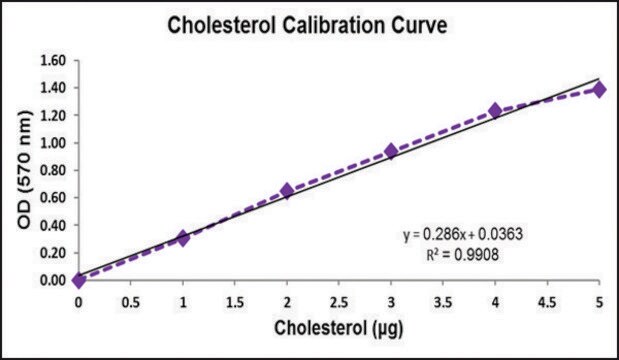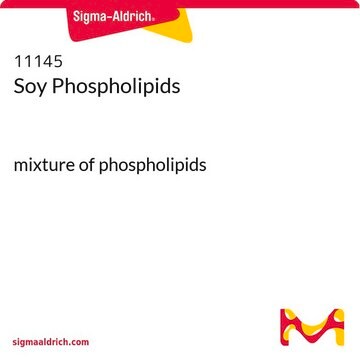MAK122
Phospholipid Assay Kit
sufficient for 100 colorimetric or fluorometric tests
Synonym(s):
Phospholipid Quantification Kit
About This Item
Recommended Products
usage
sufficient for 100 colorimetric or fluorometric tests
application(s)
cosmetics
food and beverages
pharmaceutical
detection method
colorimetric
fluorometric
shipped in
dry ice
storage temp.
−20°C
Related Categories
General description
In this assay, phospholipids (such as lecithin, lysolecithin and sphingomyelin) are enzymatically hydrolyzed to choline which is determined using choline oxidase and a H2O2-specific dye. This results in a colorimetric (570 nm)/ fluorometric (λex = 530/λem = 585 nm) product directly proportional to the phospholipid concentration in the sample. The range of linear detection is 3 - 200 μM for colorimetric assays and 0.6 - 20 μM for fluorometric assays.
Application
Features and Benefits
Suitability
Principle
Signal Word
Danger
Hazard Statements
Precautionary Statements
Hazard Classifications
Aquatic Chronic 3 - Resp. Sens. 1
Storage Class Code
10 - Combustible liquids
Regulatory Listings
Regulatory Listings are mainly provided for chemical products. Only limited information can be provided here for non-chemical products. No entry means none of the components are listed. It is the user’s obligation to ensure the safe and legal use of the product.
EU REACH Annex XIV (Authorisation List)
Certificates of Analysis (COA)
Search for Certificates of Analysis (COA) by entering the products Lot/Batch Number. Lot and Batch Numbers can be found on a product’s label following the words ‘Lot’ or ‘Batch’.
Already Own This Product?
Find documentation for the products that you have recently purchased in the Document Library.
Customers Also Viewed
Our team of scientists has experience in all areas of research including Life Science, Material Science, Chemical Synthesis, Chromatography, Analytical and many others.
Contact Technical Service






